024年3月,David Green带领我们深入了解了人力资源和人力分析的最新趋势。在欧洲和美国的几场关键活动中,他强调了人力分析在提升员工体验、AI在工作场所的角色、以及四天工作周趋势的增长中的转型作用。此外,Culture Amp对Orgnostic的收购和在Culture First Leaders Forum上的见解,突出了培养适宜的组织文化对于未来工作的战略重要性。Green的观点强调了HR需要采用数据驱动策略,以实现有效的劳动力规划、技能发展和组织增长。
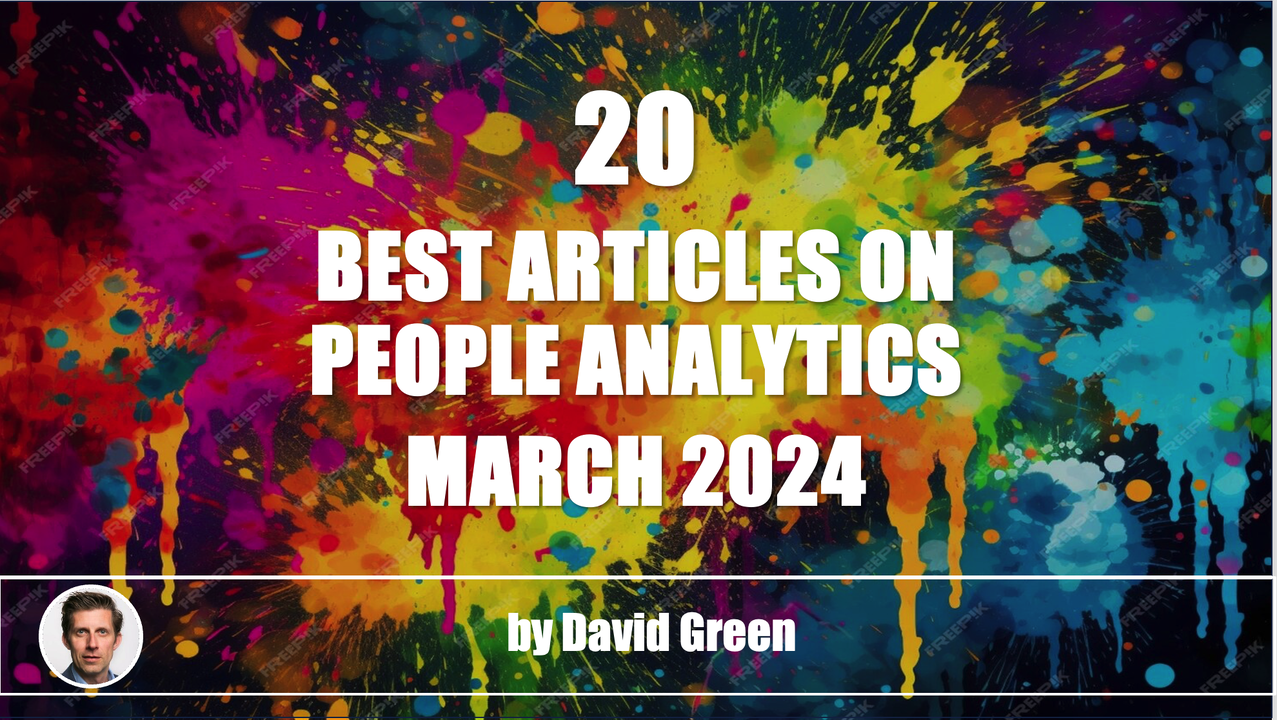
2024 HR TRENDS AND PREDICTIONS
KATE BRAVERY, JOANA SILVA, AND JENS PETERSON - Workforce 2.0: Unlocking human potential in a machine-augmented world – Mercer Global Talent Trends 2024
The world of work is in full metamorphosis, forever changed by the seismic shifts of the past few years and accelerated by the imminent human-machine teaming revolution. Just as organizations were settling into a new normal — with a focus on hybrid working, comprehensive health and well-being, digitalization, and upskilling — Generative AI (Gen AI) burst onto the scene.
Those are the opening words from the Mercer Global Talent Trends 2024 report, which has recently been published. As ever, the study, which is based on a survey of more than 12,000 executives, HR leaders, employees, and investors, and is authored by Kate Bravery Joana Silva and Jens Peterson is an absolute must-read. The study highlights a disconnect between what HR is prioritising for the 2024 people agenda and the initiatives that executives believe will have the most impact on business growth (see FIG 1). The study highlights four priorities that firms that outpace their competitors are focusing on: (1) Driving human-centric productivity. (2) Anchoring to trust and equity. (3) Boosting the corporate immune system. (4) Cultivating a digital-first culture. My tip to enjoy the study: find a couple of hours, make yourself a cup of tea and have a pen and paper to hand.

FIG 1: HR priorities for the 2024 people agenda (Source: Mercer Global Talent Trends 2024)

FIG 2: Drivers and drainers of employee productivity(Source: Mercer Global Talent Trends 2024)
BRIAN ELLIOTT - Return-to-Office Mandates: How to Lose Your Best Performers
There is mounting evidence that mandates don’t improve financial performance. Instead, they damage employee engagement and increase attrition, especially among high-performing employees and particularly those with caregiving responsibilities.
That’s according to Brian Elliott in his latest column in MIT Sloan Management Review, which highlights that the workers most likely to be turned off by return-to-office mandates are the company’s highest performers. Elliott highlights the link between factors such as pressure from investors and the CEO echo chamber with RTO pronouncements, as well as how only one in three executives believe that RTO has had even a slight impact on productivity. He recommends instead focusing on productivity rather than physical presence (see FIG 3) and how this can inspire a boom loop in engagement as opposed to a doom loop in trust. Finally, Elliott presents findings from the Future Forum and i4CP, highlighting the negative impact of RTO mandates, before offering guidance on how to build an outcomes-driven organisation: “The bottom line is that when trust is balanced with accountability, people and organizations will thrive.”

FIG 3: Focus on Productivity, Not Physical Presence (Sources: Future Forum, Centre for Transformative Work Design, and Slack)
AARON DE SMET, SANDRA DURTH, BRYAN HANCOCK, MARINO MUGAYAR-BALDOCCHI, AND ANGELIKA REICH - The human side of generative AI: Creating a path to productivity
As teams start using gen AI to help free up their capacity, the middle manager’s job will evolve to managing both people and the use of this technology to enhance their output.
A fascinating new study from McKinsey, which provides analysis on workers who are at the forefront of gen AI usage (which as FIG 4 shows is dominated by those in non-technical roles) and dives into the job factors and skills these workers say they need. The authors emphasise how firms can enhance productivity by crafting jobs that put people before tech – rather than the other way around. They conclude that companies that set a people-centric talent strategy will give themselves a competitive edge as more workers and jobs are affected by the changes gen AI brings. The article is rich with data and powerful visualisations – kudos to the authors: Aaron De Smet Sandra Durth Bryan Hancock Marino Mugayar-Baldocchi and Angelika Reich ).

FIG 4: Workers who use generative AI as part of their jobs comprise a much larger group than those who hold traditionally technical roles (Source: McKinsey)
PETER CAPPELLI, PRASANNA (SONNY) TAMBE, AND VALERY YAKUBOVICH - Will Large Language Models Really Change How Work Is Done?
LLMs are much more complicated to use effectively in an organizational context than is typically acknowledged, and they have yet to demonstrate that they can satisfactorily perform all of the tasks that knowledge workers execute in any given job.
In their article, Peter Cappelli Prasanna Tambe and Valery Yakubovich look at the use and challenges of integrating Large Language Models (LLMs) in organisations, and present practical recommendations on how to work with LLMs successfully. The five challenges outlined in the article are: (1) The Knowledge Capture Problem. (2) The Output Verification Problem. (3) The Output Adjudication Problem. (4) The Cost-Benefit Problem. (5) The Job Transformation Problem – How will LLMs work with workers? Guidance includes developing and circulating standards for the use of LLMs in organisations, establishing a central office to produce important LLM output, and providing training to users.
NICK BLOOM – Why WFH is a win-win-win | WFH research update (March 2024)
Nick Bloom’s recent post on LinkedIn highlighting his research on why remote working is a win for firms (due to increased productivity of $20,000 a year for each remote day a week), employees, and society is extremely compelling. I also recommend reading Nick’s latest monthly data for March, which includes numerous insights such as that workers in their 50s and 60s are fully onsite more often than younger workers. For more from Nick, please tune in to his discussion with me on the Digital HR Leaders podcast: Unmasking Common Myths Around Remote Work.
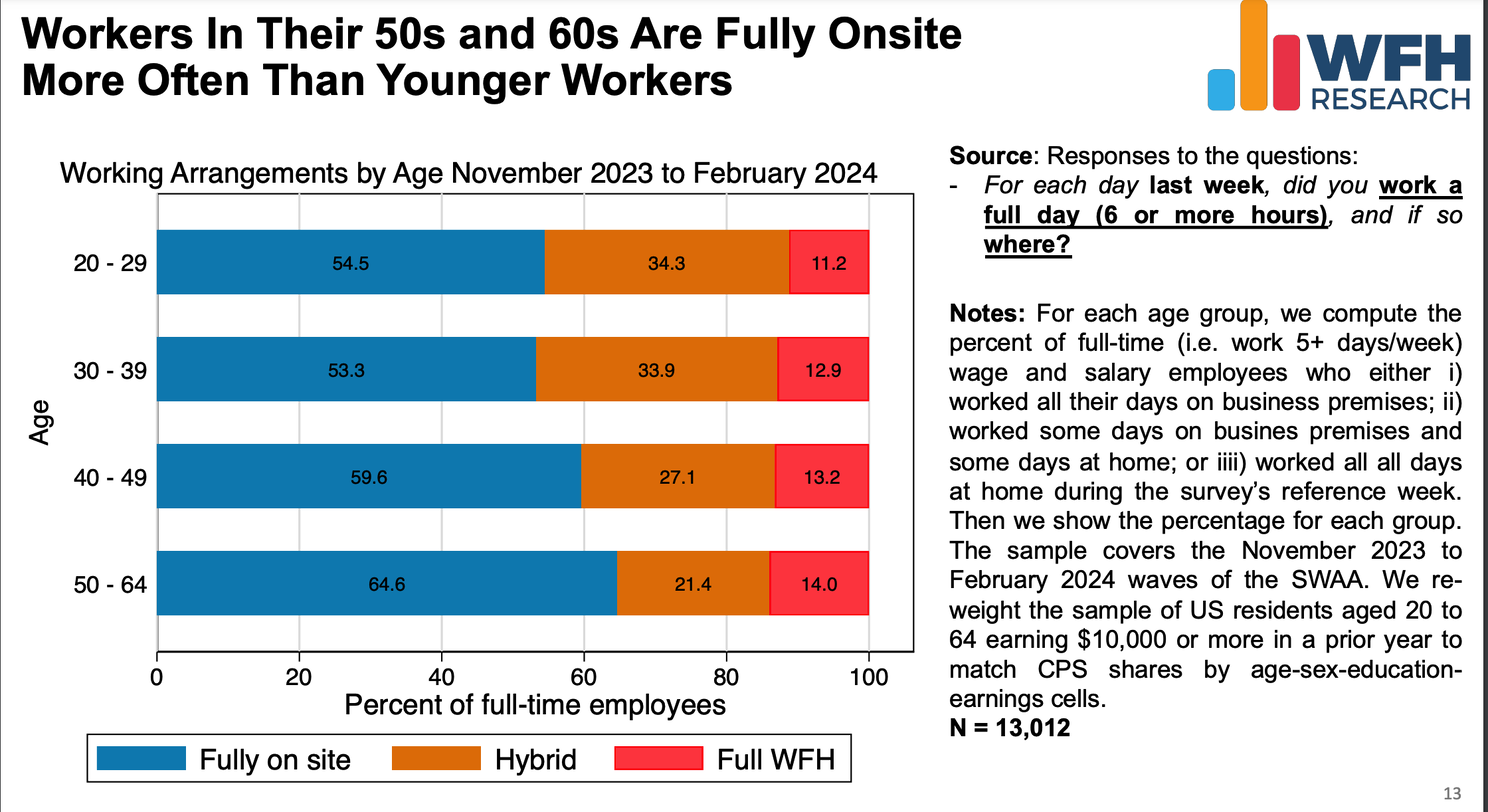
FIG 5: Workers in their 50s and 60s are fully onsite more often than younger workers (Source: WFH Research)

PIETRO MAZZOLENI - Transforming HR: How IBM measures the success of its people data platform investments
For those of you who haven’t already subscribed to Pietro Mazzoleni’s People Data Platform newsletter, where he unpacks insights from transforming IBM's internal data platform for people analytics, I highly recommend you do. In this edition, Pietro walks through the three tiers of Key Performance Indicators (KPIs) IBM uses to evaluate investments in Workforce 360, its people data platform (see FIG 6). Watch out for an upcoming episode of the Digital HR Leaders podcast, where I discuss with CHRO Nickle LaMoreaux how IBM is augmenting HR programs with AI. The episode will air from April 9.
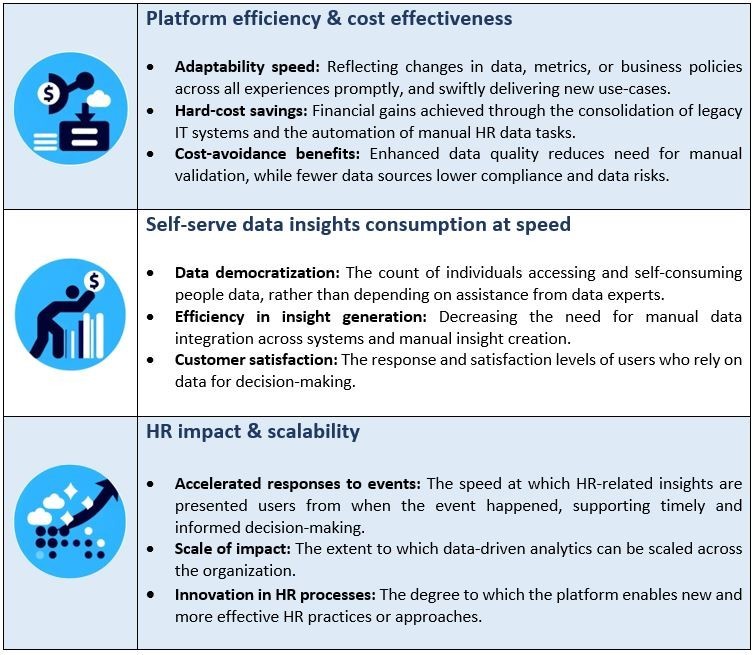
FIG 6: Three tiers of KPIs to evaluate investments in a people data platform (Source: Pietro Mazzoleni)
NAOMI VERGHESE - Influencing C-Suite and Board Decisions with People Analytics Insights
Naomi Verghese shares key learnings from the recent Peer Meeting for member companies of the Insight222 People Analytics Program, hosted by HSBC in their global headquarters in London. The Peer Meeting, which was attended by over 60 people analytics leaders and practitioners from more than 40 companies focused on two of the key findings from the Insight222 People Analytics Trends study for 2023: influencing senior stakeholders and measuring value. In her article, Naomi covers four topics: (1) how to implement a people analytics operating model that drives business outcomes (based on insights shared at the Peer Meeting by Rob Etheridge and Bec Aoude). (2) how to use AI to democratise insights from people data, using an example of work Andrew Elston has led at HSBC. (3) how Microsoft’s employee listening ecosystem (see FIG 7) helped the firm identify the moments that matter for in-person collaboration (insights from a session led by Dawn Klinghoffer), and (4) how to influence the board of directors, with insights from Justine Thompson. If you would like to learn more about our People Analytics Program, contact us today.

FIG 7: Microsoft’s employee listening ecosystem (Source: Dawn Klinghoffer, Microsoft)
BRENT DYKES - The Future Of Data Storytelling Is Augmented, Not Automated
Brent Dykes continues his rich vein of writing with an article exploring whether AI tools should be used to automate data storytelling. He provides reasons why data storytelling can’t or shouldn’t be automated including for reasons of oversimplification, transparency and trust, and the fact that storytelling is essentially a human skill. Instead, Brent advocates that the path forward should be augmented data storytelling, and lays out a powerful illustration of how this would work (see FIG 8)
The most powerful person in the world is the storyteller. The storyteller sets the vision, values, and agenda of an entire generation that is to come.

FIG 8: Data storytelling comparisons: Humans vs. AI (Source: Brent Dykes)
HALLIE BREGMAN – Where should People Analytics sit in an Organisation? Part 1 & Part 2 | WILLIS JENSEN – Can Data Cleaning be Automated? | COLE NAPPER - Universal Models & People Analytics | ALEXANDER LOCHER - How to harness the value of people data and operational HR insights | ANGELA LE MATHON, STACIA GARR, AND DANI JOHNSON - Generating Value from People Data
In recent editions of the Data Driven HR Monthly, I’ve been featuring a collection of articles by current and recent people analytics leaders. These act as a spur and inspiration to the field. Five are highlighted here. (1) If you don’t already follow Hallie Bregman, PhD on LinkedIn, you really should. Hallie regularly publishes thoughtful and insightful posts on topics important to the field. The two I’ve included here look at the pros and cons of situating people analytics in or outside HR. (2) Willis Jensen analyses whether AI will reduce the amount of data cleaning undertaken by people analysts given that much of this work involves judgement without hard, fast or consistent rules. (3) Cole Napper, who I’m looking forward to co-chairing People Analytics World with in London in April – also with Michael M. Moon, PhD – explains how many of the models we use in people analytics are borrowed from other disciplines. (4) Alexander S. Locher highlights some of the current trends in people analytics (see FIG 9) and offers guidance on how to harness value from your people data. (5) Angela LE MATHON, VP People Data and Analytics, shares how GSK generates value with their people data, how they’re using AI to gather information, and how skills verification ties in with Stacia Sherman Garr and Dani Johnson of RedThread Research.

FIG 9: Current trends in people analytics (Source: Alexander Locher, EY)
JO IWASAKI, KAREN EDELMAN, AND YASMINE CHAHED - Time to rethink talent in the boardroom
Just over a third of board and c-level executives believe their workforce related discussions are adequate to meet their organisation’s needs. That’s the standout finding from a new global survey by Jo Iwasaki Karen Edelman and Dr Yasmine Chahed for Deloitte of 500 board members and C-suite executives in more than 50 countries on corporate governance and talent. The three top insights from the study were: (1) Many boards could be focusing more on talent-related issues. (2) Most organisations are just starting to think about their AI strategies. (3) Amplifying the talent experience will require boards to adopt a broader perspective.

FIG 10: Workplace related topics that are top board priorities (Source: Deloitte)
DAVE ULRICH - Pre-flections on GenAI and HR: Where to Go and How to Get There
GenAI will help shape HR’s future by offering both information symmetry to synthesize and optimize the past and present and information asymmetry to create and guide the future.
Dave Ulrich offers some initial reflections on what the journey could look like for applying GenAI to HR work, as well as some possible actions to drive progress (see example in FIG 11 for ‘Talent’). Dave also highlights four important considerations to manage the risk and realise the opportunity of GenAI in HR. (1) Who should champion, sponsor, participate in, and be accountable for this journey? (2) What individual skills and organisation capabilities will be required to make GenAI in HR happen? (3) What will be the regulatory and legal policies and risks associated with the effort? (4) What metrics of value-added GenAI for HR will be most useful and tracked?

FIG 11: Examples of GenAI/HR initiatives in the Talent domain (Source: Dave Ulrich)
HEIN KNAPPEN - How HR Adds to Enterprise Value
Hein J.M. Knaapen, a former chief people officer himself, shares his perspectives on the crucial role HR plays in driving business value, and offers practical advice to CHROs on how to make this a reality. Hein highlights the four people priorities that connect to value: (1) Performance management, (2) Succession management, (3) Leadership development, and (4) Capability building, providing guidance on each.
Value creation should be the focus. Nothing else. And only four people priorities connect to value: performance management, succession management, leadership development and capability building.
STEFAN HIERL - Identifying the AI Potential in Your Organization: A Strategic Approach
Leveraging Generative AI to assess the AI Potential in a workforce helps businesses go beyond just talking about how AI might change jobs.
As Stefan Hierl astutely observes in his excellent article, in the rush to jump on the AI bandwagon, many companies fall into the trap of overlooking a critical preliminary step: conducting a systematic evaluation of where AI can deliver transformative value. In his article, Stefan outlines a five-step approach to quantify the potential of AI to support organisations identify opportunities for automating and augmenting work activities. The five steps (see FIG 12), which Stefan outlines in detail are: (1) Decomposing roles by breaking down each role into its main activities and respective time shares. (2) AI potential assessment – estimating the potential of AI at the activity level. (3) Expert validation – cross-verifying the generative AI findings with domain experts. (4) Identify high-value areas – creating an overview where AI can significantly enhance workforce productivity (see example in FIG 13). (5) Use case development – exploring specific AI applications to capitalise on identified potential.

FIG 12: Five steps to perform an activity based AI potential assessment (Source: Stefan Hierl)
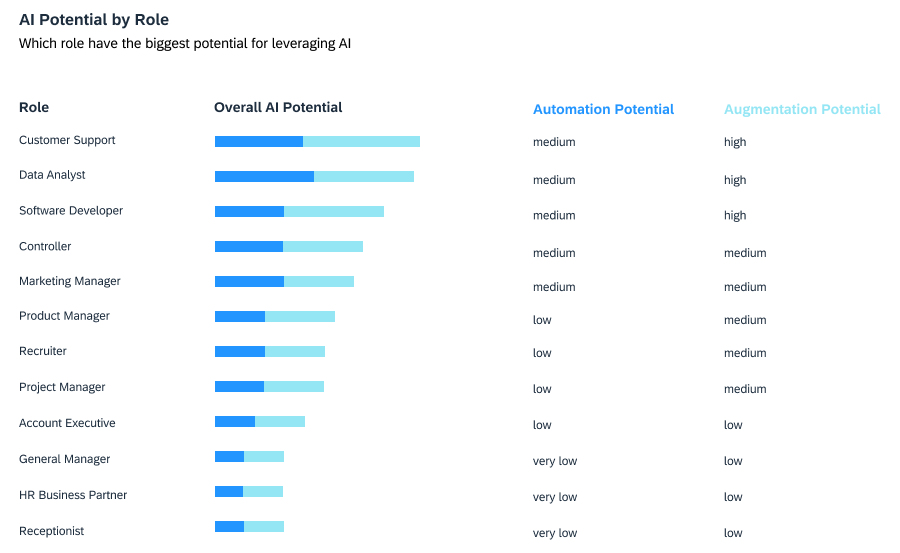
FIG 13: AI potential by role – example (Source: Stefan Hierl)
MATT SIGELMAN, JOSEPH FULLER, AND ALEX MARTIN - Skills-Based Hiring: The Long Road from Pronouncements to Practice
For all its fanfare, the increased opportunity promised by Skills- Based Hiring was borne out in not even 1 in 700 hires last year (2023).
This is one of the standout findings from a new study by Matt Sigelman and Alex Martin of The Burning Glass Institute and Joseph Fuller from Harvard Business School. Their analysis reveals three categories of firms, who have publicly stated they have removed degree requirements in hiring, based on their actual hiring outcomes: (1) Skills-based hiring leaders (e.g. Cigna) – who have increased their share of non-degree hires in the roles analysed by nearly 20%. (2) In name only (e.g. Bank of America) – 45% of firms studied have made the shift in name only with no meaningful difference in actual skills-based hiring. (3) Backsliders e.g. Uber) – 20% of the firms analysed had made short-term gains by dropping degree requirements, but the change doesn’t stick. The report also highlights the roles best positioned for skills-based hiring (see FIG 14).

FIG 14: The roles best positioned for skills-based hiring (Source: Sigelman et al)
JORDAN PETTMAN - How to Accelerate the Impact of Strategic Workforce Planning (SWP) through the Organisation Strategy Ecosystem
Jordan Pettman, one of my colleagues at Insight222, knows a thing or two about workforce planning. In his recent article for myHRfuture, Jordan explores how strategic design can be brought to life through an integrated ecosystem (see FIG 15) encompassing four components: (1) Organisation strategy, (2) Operating model, (3) Organisation design and strategic workforce planning, and (4) Organisation effectiveness.
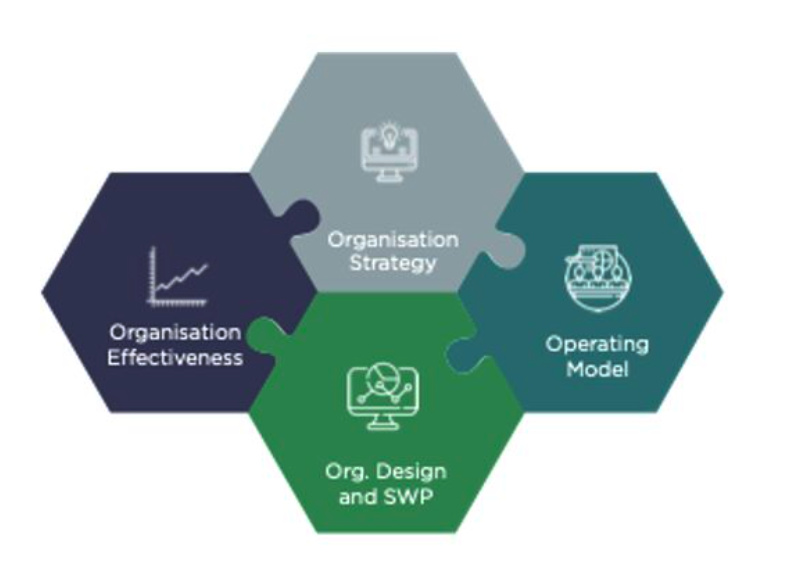
FIG 15: The Organisation Strategy Ecosystem (Source: Jordan Pettman, Insight222)
JACQUELINE BRASSEY, LARS HARTENSTEIN, BARBARA JEFFERY, AND PATRICK SIMON – Working nine to thrive
One of the few positives to emerge through and since the pandemic has been a stronger focus on employee health and wellbeing. According to new research by Jacqui Brassey, PhD, MA, MAfN (née Schouten) Lars Hartenstein Barbara Jeffery and Dr. Patrick Simon, on behalf of the McKinsey Health Institute, improving employee health and wellbeing doesn’t just benefit workers and organisations, it could generate between $3.7 to $11.7 trillion in global economic value (see FIG 16). Their article focuses on six drivers of health that employers can influence - social interaction, mindsets and beliefs, productive activity, stress, economic security, and sleep – and provides guidance on how organisations can move the dial on each.
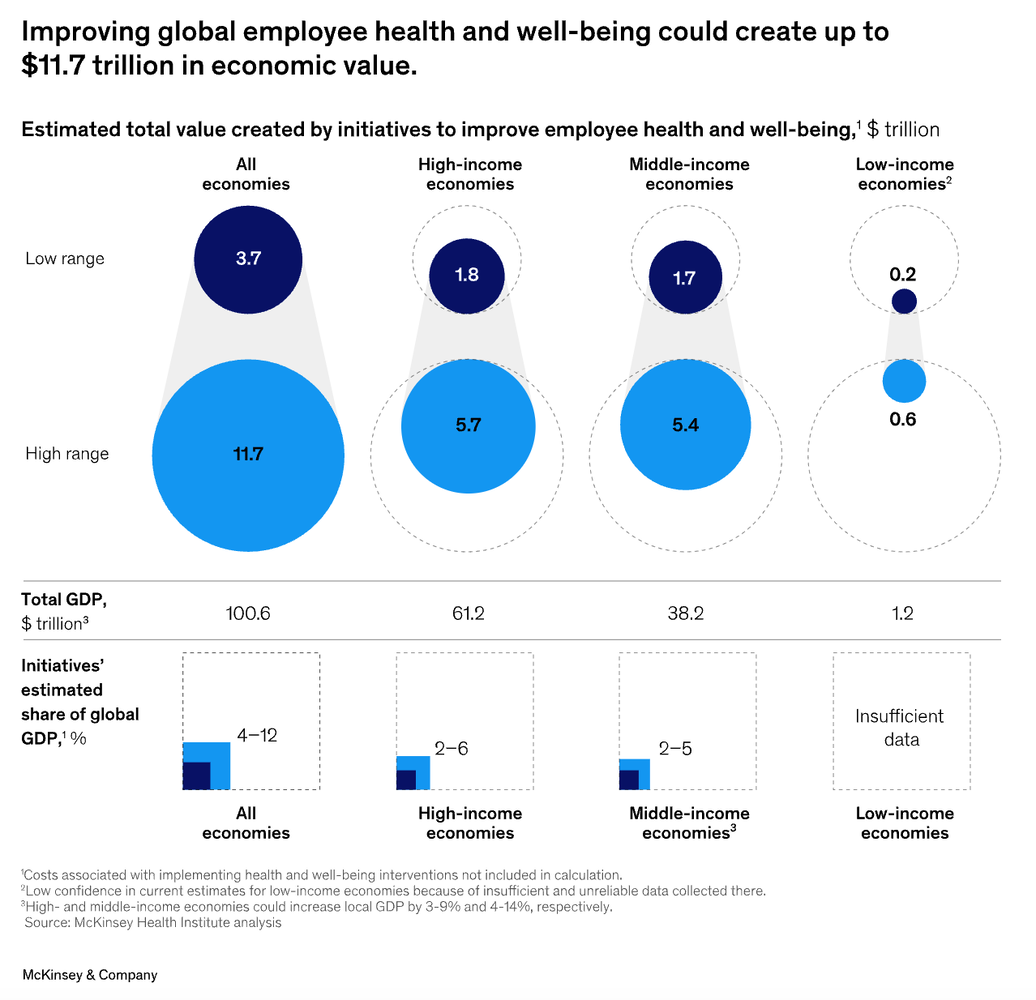
FIG 16: Improving global employee health and wellbeing could create up to $11.7 trillion in economic value (Source: McKinsey Health Institute)
LINKEDIN LEARNING – Workplace Learning Report 2024: L&D powers the AI future
As AI reshapes how people learn, work, and chart their careers, L&D sits at the center of organizational agility, delivering business innovation and critical skills.
Aligning learning programs to business goals emerges as the top L&D focus area for 2024 in LinkedIn Learning’s annual report on the L&D field, which is based on analysis of LinkedIn behavioural data and focus interviews with L&D professionals around the globe. The report is structured into three chapters: (1) The State of L&D (the study finds that a strong learning culture derives retention, mobility, and promotion. – see FIG 17), (2) Skills agility (the study finds that only 33% of organisations have internal mobility programs), and (3) How L&D succeeds) with priorities #1 and #2 being to lean into analytics and build the right metrics – see FIG 18). The report features contributions from the likes of: Amanda Nolen (who asks: “What if Chief Learning Officers become Chief Skills Officers”), Chris Louie Geraldine Murphy Terri Horton, EdD, MBA, MA, SHRM-CP, PHR Alexandra Halem Ekpedeme "Pamay" M. Bassey Shruti Bharadwaj and Dani Johnson.

FIG 17: Business outcomes and learning culture (Source: LinkedIn Learning)

FIG 18: How L&D tracks business impact (Source: LinkedIn Learning)
AYSE KARAEVLI AND SERDEN ÖZCAN - Make Better Allies of Your Workforce
When the board takes the recommendations of employee advisory groups seriously and incorporates them into decisions, employees become more empowered, and their perspectives become embedded into their company’s long-term objectives.
In their article for MIT Sloan Management Review, Ayse Karaevli and Serden Ozcan present findings from their interviews with board directors, CEOs, CFOs, and employee representatives to understand how to manage conflict and engage workers. From their analysis, Ayse and Serden identified three strategies effective leaders use to include employees (see FIG 19): (1) Identify mutual goals and interests, (2) Foster inclusive decision processes, and (3) Give employees strategic responsibilities. The article then describes each of these in detail with examples from the likes of ThyssenKrupp, Allianz, Siemens, and Bayer before highlighting the importance of employee advisory groups, engagement with board members and the role of committees and task forces to imbue governance and participation.

FIG 19: Three Strategies to Avert Workforce Controversies (Source: Ayse Karaevli and Serden Özcan)
SUNDIATU DIXON-FYLE, MASSIMO GIORDANO, TANIA HOLT, TUNDE OLANREWAJU, DARA OLUFON, AND SANDRA SANCIER-SULTAN - Ethnocultural minorities in Europe: A potential triple win
Greater inclusion of ethnocultural minorities could fill talent gaps and spur company growth, increase economic empowerment of these groups, and generate benefits for the economy and broader society.
Despite the anti-immigration policies of many current European governments (that includes you, Rishi Sunak), stagnant economies, tight labour markets, and shrinking working populations mean that immigration is key to unlocking economic growth. In their superb analysis for McKinsey, Sundiatu Dixon-Fyle Massimo Giordano Tania Zulu Holt Tunde Olanrewaju Dara Olufon and Sandra Sancier-Sultan provide data insights on what they classify as ethnocultural minorities in Europe, and their (mostly challenging) experiences. The authors also provide guidance for companies on ethnocultural minority employee inclusion across five dimensions (see FIG 20).

FIG 20: Companies can consider ethnocultural minority employee inclusion across five dimensions (Source: McKinsey)
Much of the innovation in the field continues to be driven by the vendor community, and I’ve picked out a few resources from March that I recommend readers delve into:
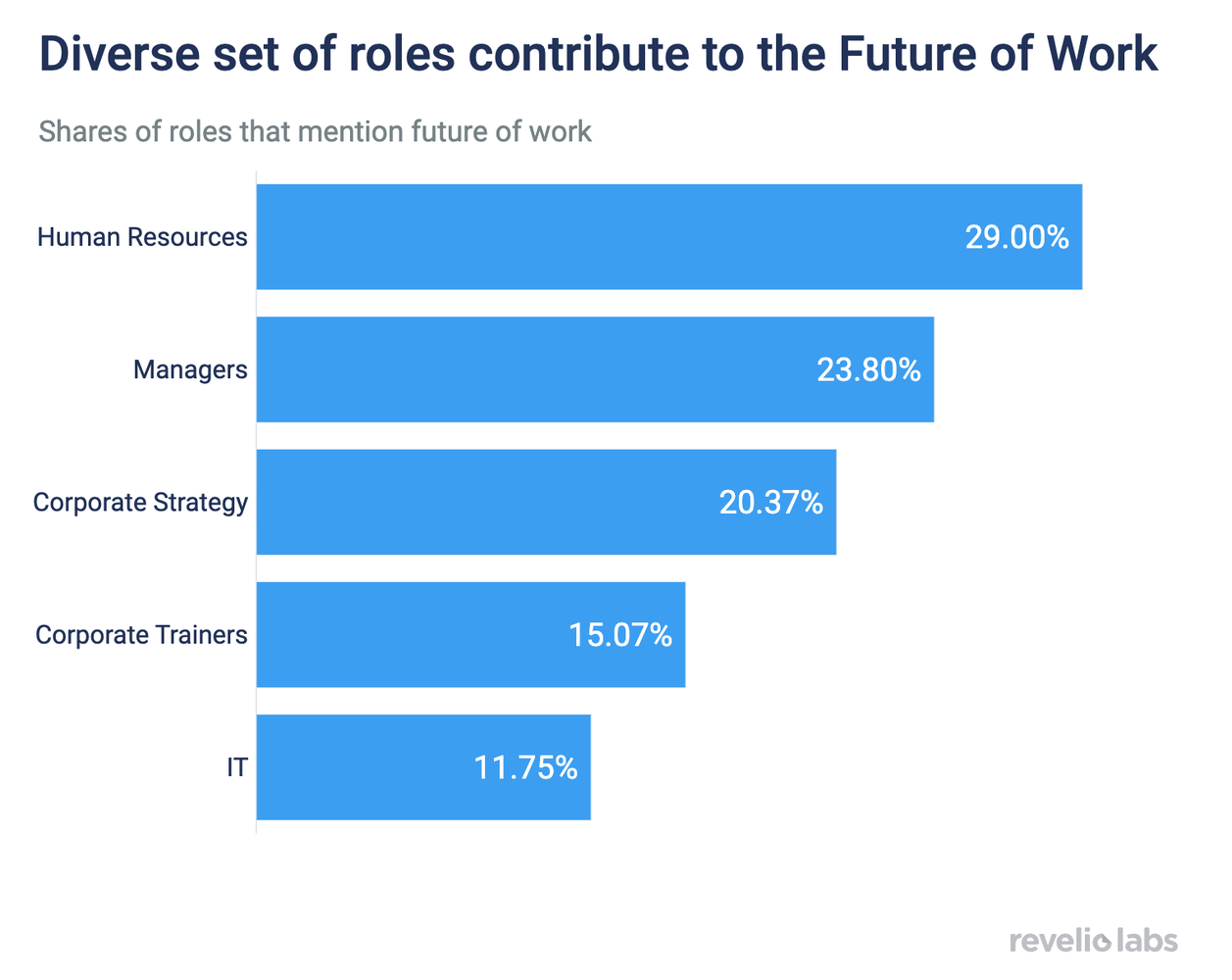
FIG 21: A diverse set of roles contribute to the Future of Work (Source: Revelio Labs)
In another month of high-quality podcasts, I’ve selected five gems for your aural pleasure: (you can also check out the latest episodes of the Digital HR Leaders Podcast – see ‘From My Desk’ below):
TANUJ KAPILASHRAMI, MICHAEL FRACCARO, TAMLA OATES-FARNEY, AND DAVID GREEN – CHRO Panel: Delivering against the transformation imperative
March’s Video of the Month proved to be a highlight for me as it features me moderating the CHRO Panel at the recent Gloat Live event in New York. The panel was comprised of Tanuj Kapilashrami Michael Fraccaro and Tamla Oates-Forney, and featured discussion on the increasingly pivotal role of the CHRO in business transformation, lessons learnt and successes from transitioning to a skills-based organisation, and how technology can enable a culture of inclusivity and opportunity.
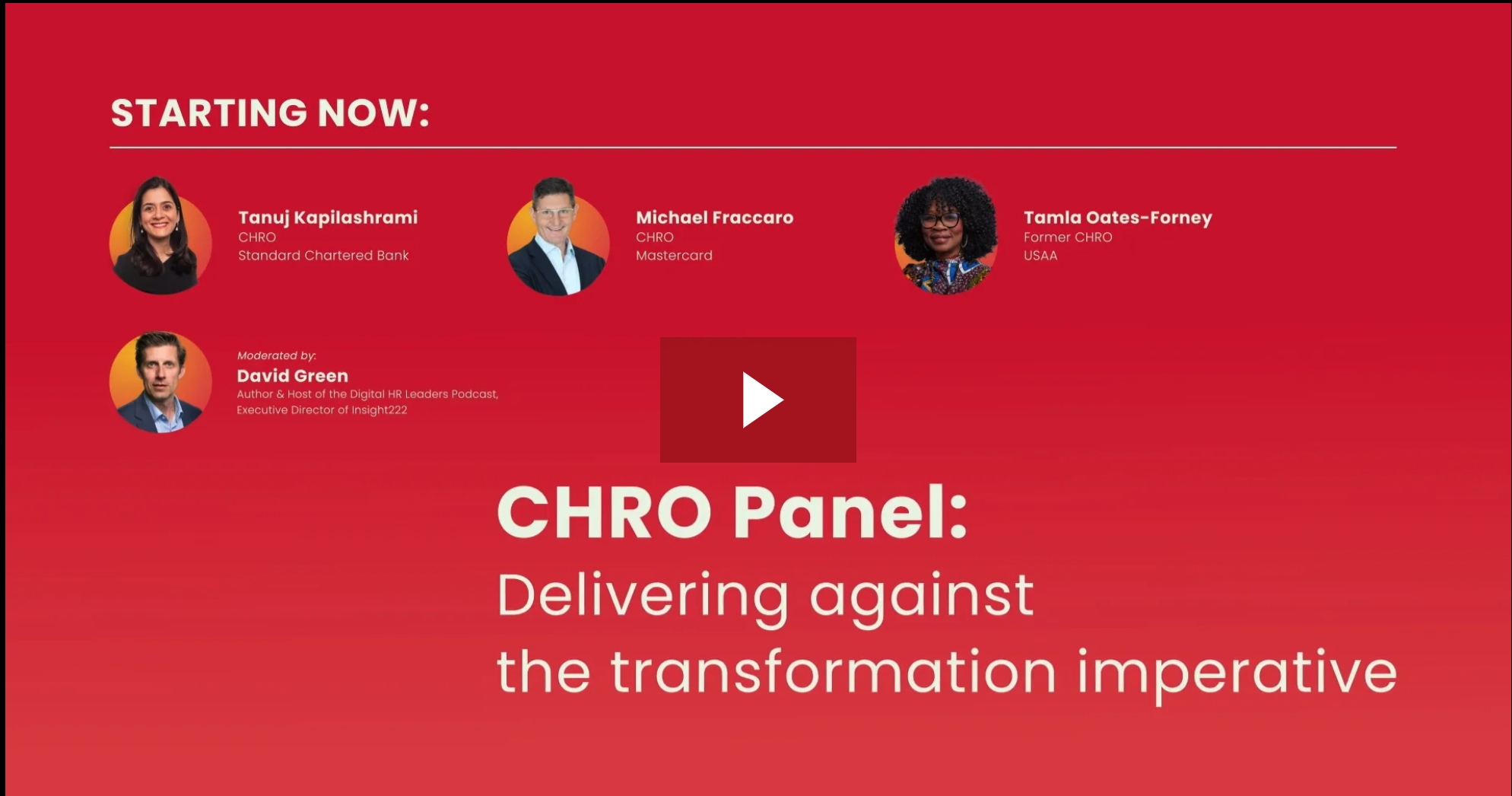
With a lot of travelling back and forth from the US in March, I found time to dig into two new books, which I recommend to readers of this newsletter:
MARC SOKOL AND BEVERLY TARULLI – Strategic Workforce Planning: Best Practices and Emerging Directions
Strategic workforce planning – the process of looking forward, assessing how to compete and win in your chosen market or business arena, and linking those insights to your existing and potential future workforce – is core to any institution that aspires to sustain itself over time.
Those are the opening words of Marc Sokol and Beverly Tarulli, Ph.D., the editors of an indispensable new volume of SIOP’s Professional Practice Series. It provides an overview of SWP, covering best practices, methodologies and new directions in the field as well as featuring contributions and case studies from a stellar list of contributors. These include: Sheri Feinzig Alexis Fink Adam Gibson Brian Heger Adam McKinnon, PhD. Kanella Salapatas and Dave Ulrich. Grab yourself a copy!
SALVATORE V. FALLETTA – Creepy Analytics: Avoid Crossing the Line and Establish Ethical HR Analytics for Smarter Workforce Decisions
In Creepy Analytics, Dr. Salvatore Falletta provides a thoughtful approach to HR Analytics that is both evidence-based and ethical – ensuring that organisations get the insights they need while respecting employee privacy. The book is built around the author’s seven-step HR Analytics Cycle (see FIG 22) and is well-researched. Thanks to Salvatore too for referencing Excellence in People Analytics several times, particularly in relation to the guidance Jonathan Ferrar and I offer around governance and the development of an ethics charter. As Alec Levenson opines in his endorsement of the book: “Falletta has done a masterful job addressing some of the most important ethical issues for workforce analytics.”
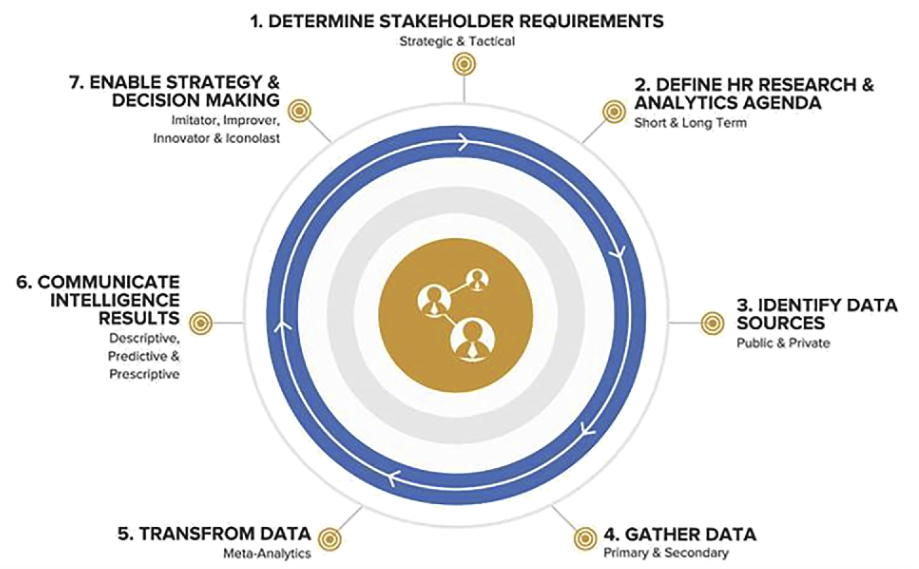
FIG 22: The HR Analytics Cycle (Salvatore V. Falletta)
MAX BLUMBERG, ALEC LEVENSON, AND DAVE MILLNER - A Strategically Aligned HR Operating Model
In their recently published paper, three eminent and progressive thinkers in our field – Max Blumberg (JA) ?? Alec Levenson and Dave Millner – set out a pivot in how HR is structured and works in order to more closely align the function to the capabilities required for successful strategy execution. They present a new HR structure (see FIG 23) designed around four key pillars, before describing each pillar in detail and providing some diagnostic steps to implement this new operating model.
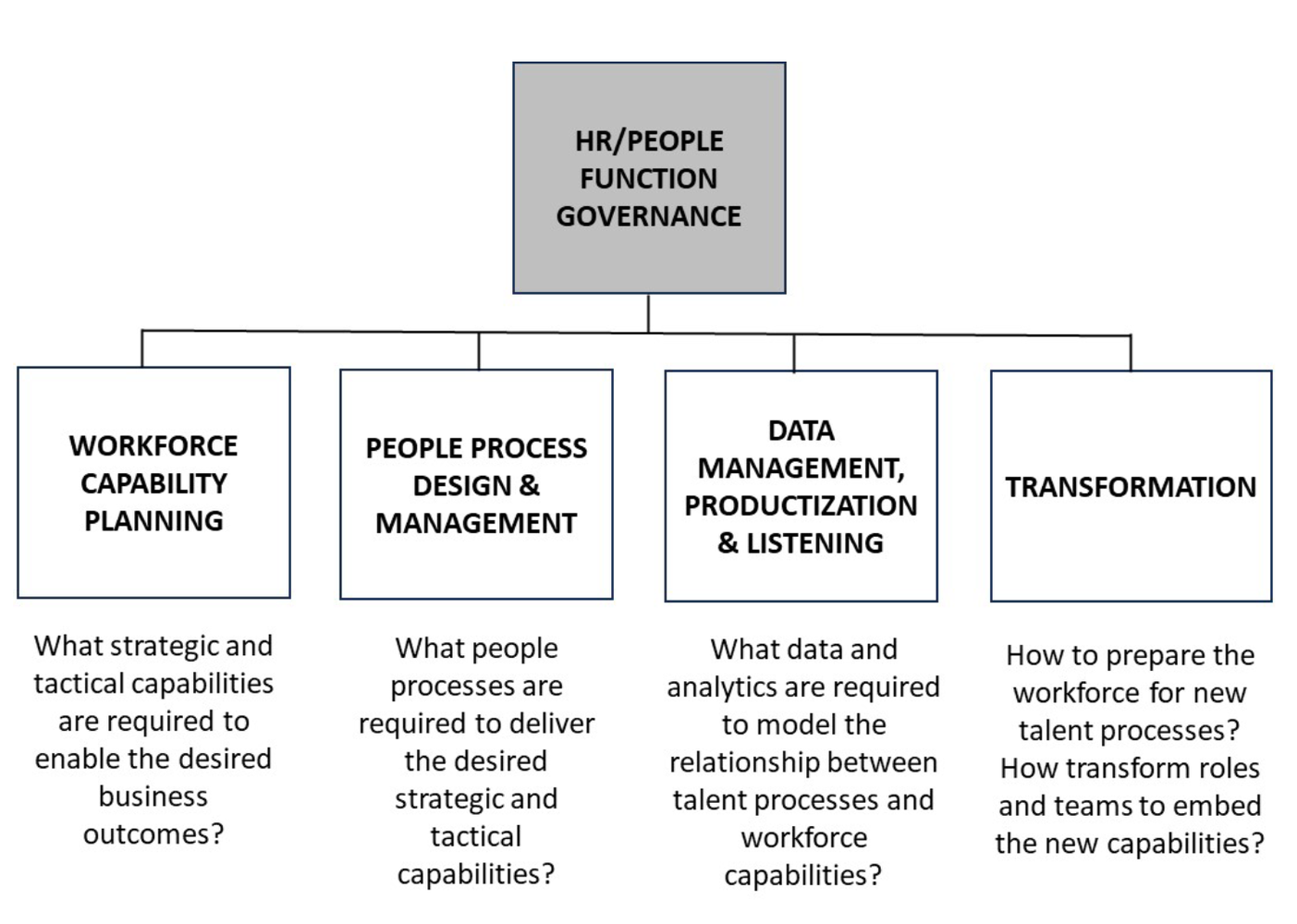
FIG 23: A new HR structure (Source: Blumberg, Levenson, and Millner)
March saw four episodes from Series 37 of the Digital HR Leaders podcast, sponsored by our friends at Culture Amp - thank you to Ellisa Packer and Jodie Evans, a round-up of series 36 and a guest appearance by yours truly on the Future Work/Life podcast:
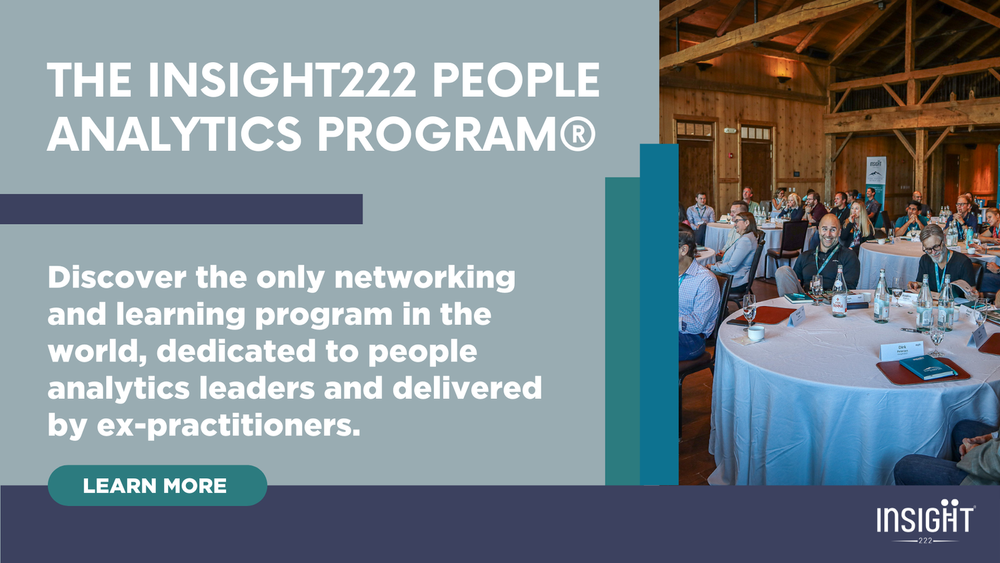
At Insight222, our mission is to make organisations better by putting people analytics at the centre of business and upskilling the HR profession The Insight222 People Analytics Program® is your gateway to a world of knowledge, networking, and growth. Developed exclusively for people analytics leaders and their teams, the program equips you with the frameworks, guidance, learnings, and connections you need to create greater impact.
As the landscape of people analytics becomes increasingly complex, with data, technology, and ethical considerations at the forefront, our program brings together over one hundred organisations to collectively address these shared challenges.
Insight222 Peer Meetings, like this event in London, are a core component of the Insight222 People Analytics Program®. They allow participants to learn, network and co-create solutions together with the purpose of ultimately growing the business value that people analytics can deliver to their organisations. If you would like to learn more, contact us today.
David Green ?? is a globally respected author, speaker, conference chair, and executive consultant on people analytics, data-driven HR and the future of work. As Managing Partner and Executive Director at Insight222, he has overall responsibility for the delivery of the Insight222 People Analytics Program, which supports the advancement of people analytics in over 90 global organisations. Prior to co-founding Insight222, David accumulated over 20 years experience in the human resources and people analytics fields, including as Global Director of People Analytics Solutions at IBM. As such, David has extensive experience in helping organisations increase value, impact and focus from the wise and ethical use of people analytics. David also hosts the Digital HR Leaders Podcast and is an instructor for Insight222's myHRfuture Academy. His book, co-authored with Jonathan Ferrar, Excellence in People Analytics: How to use Workforce Data to Create Business Value was published in the summer of 2021.

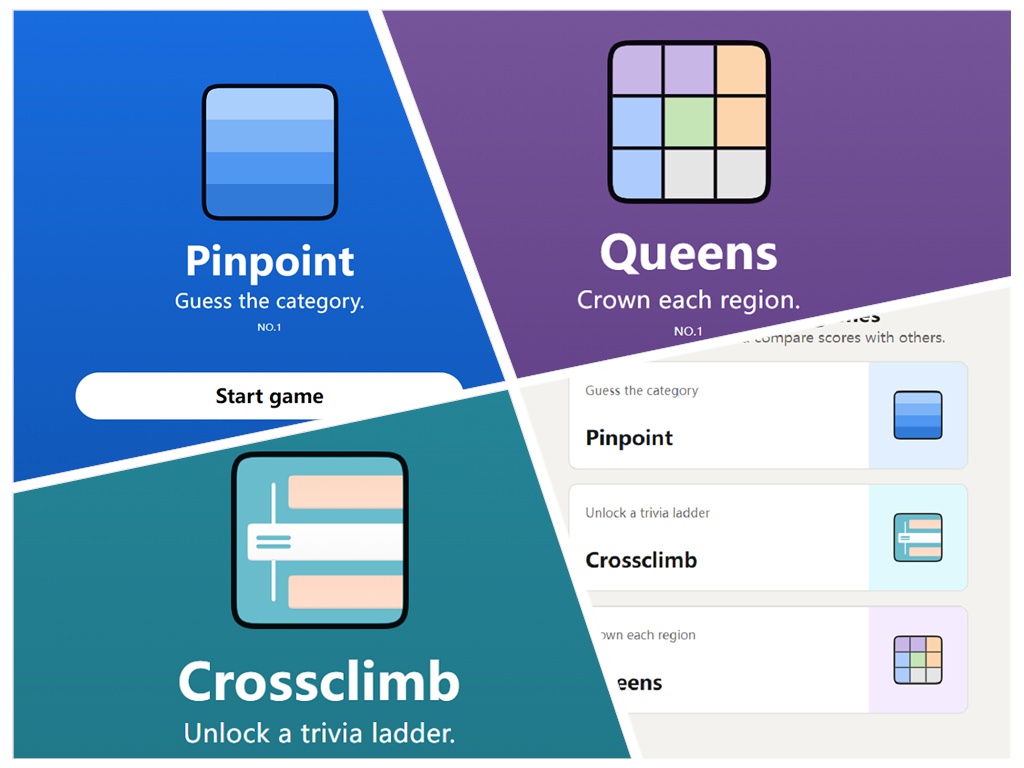
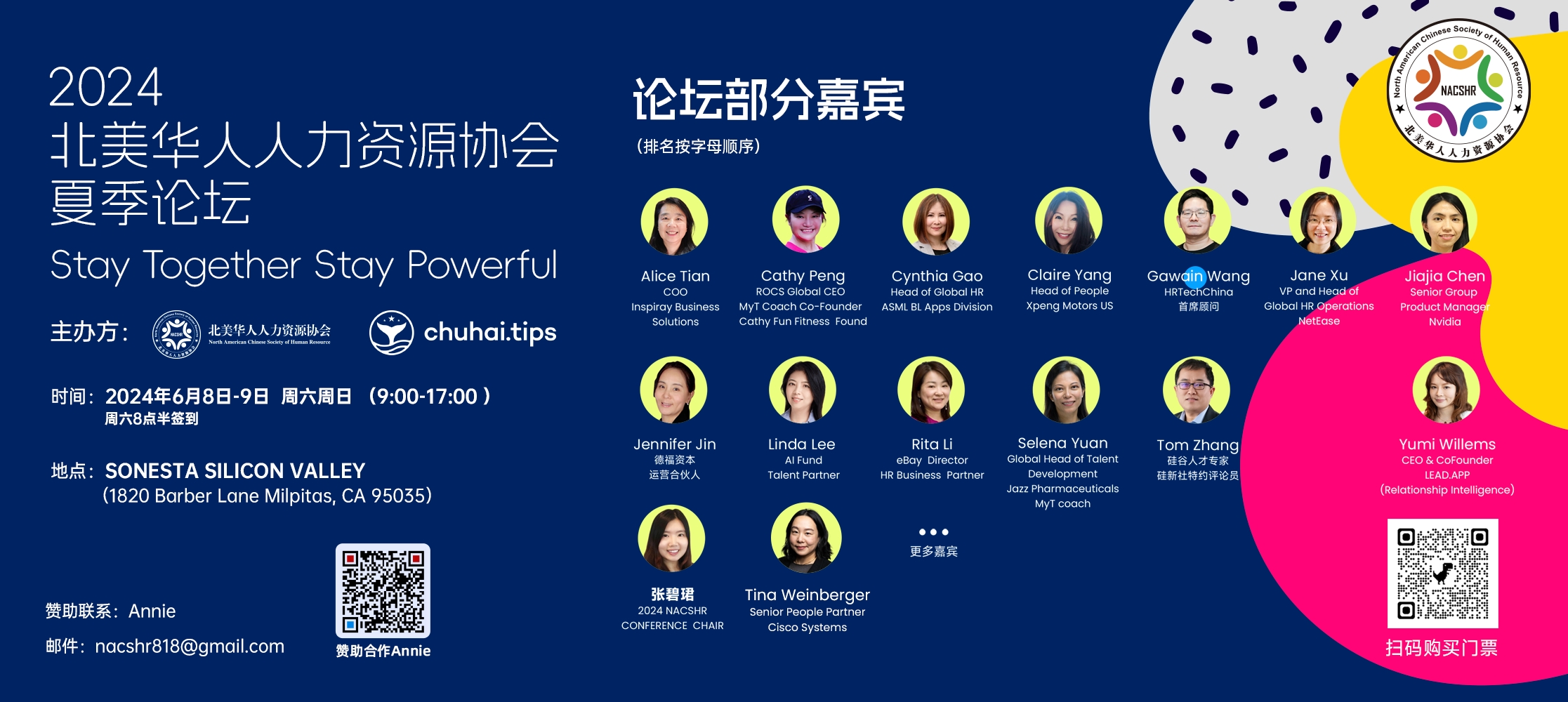
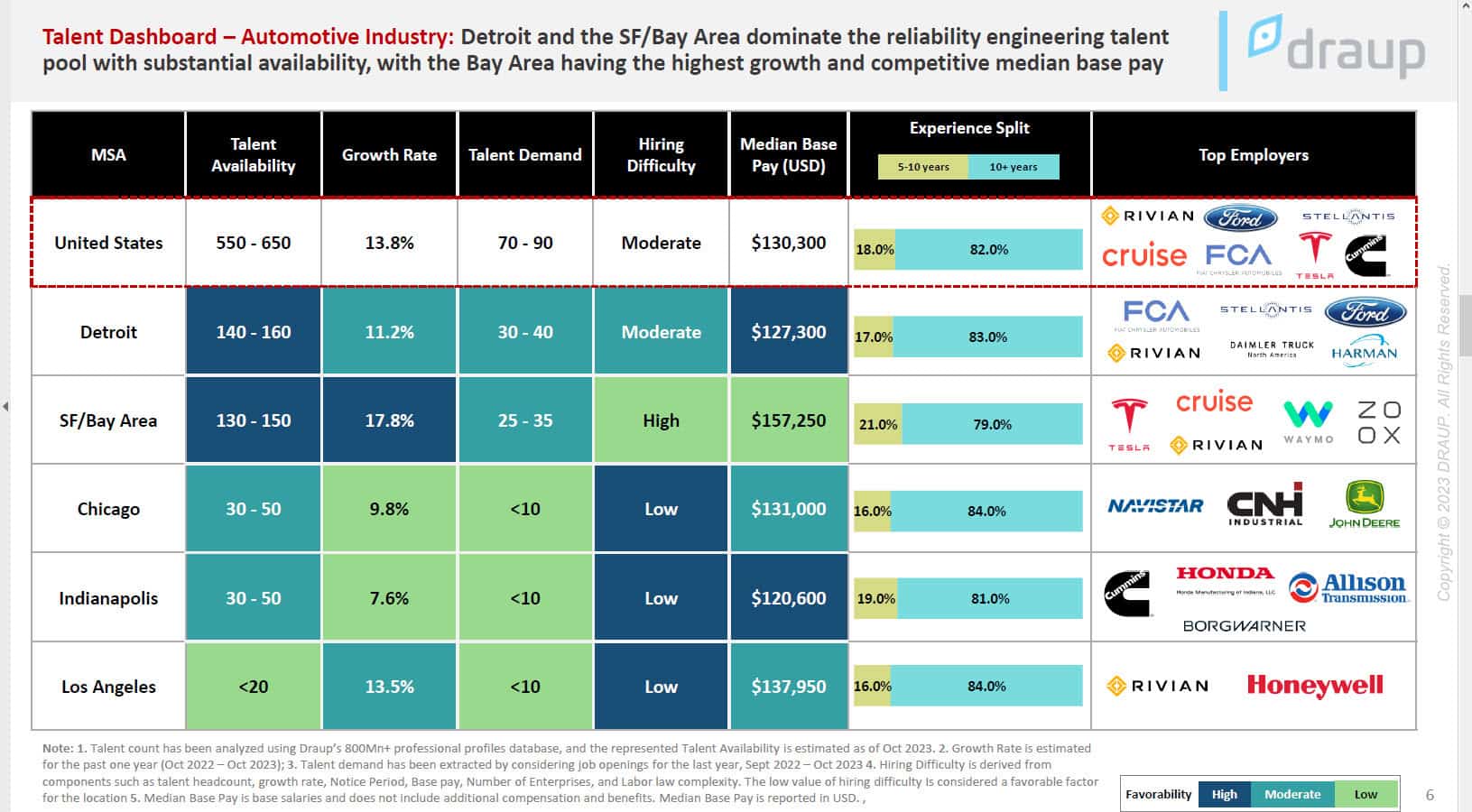

 扫一扫
添加客服
扫一扫
添加客服




